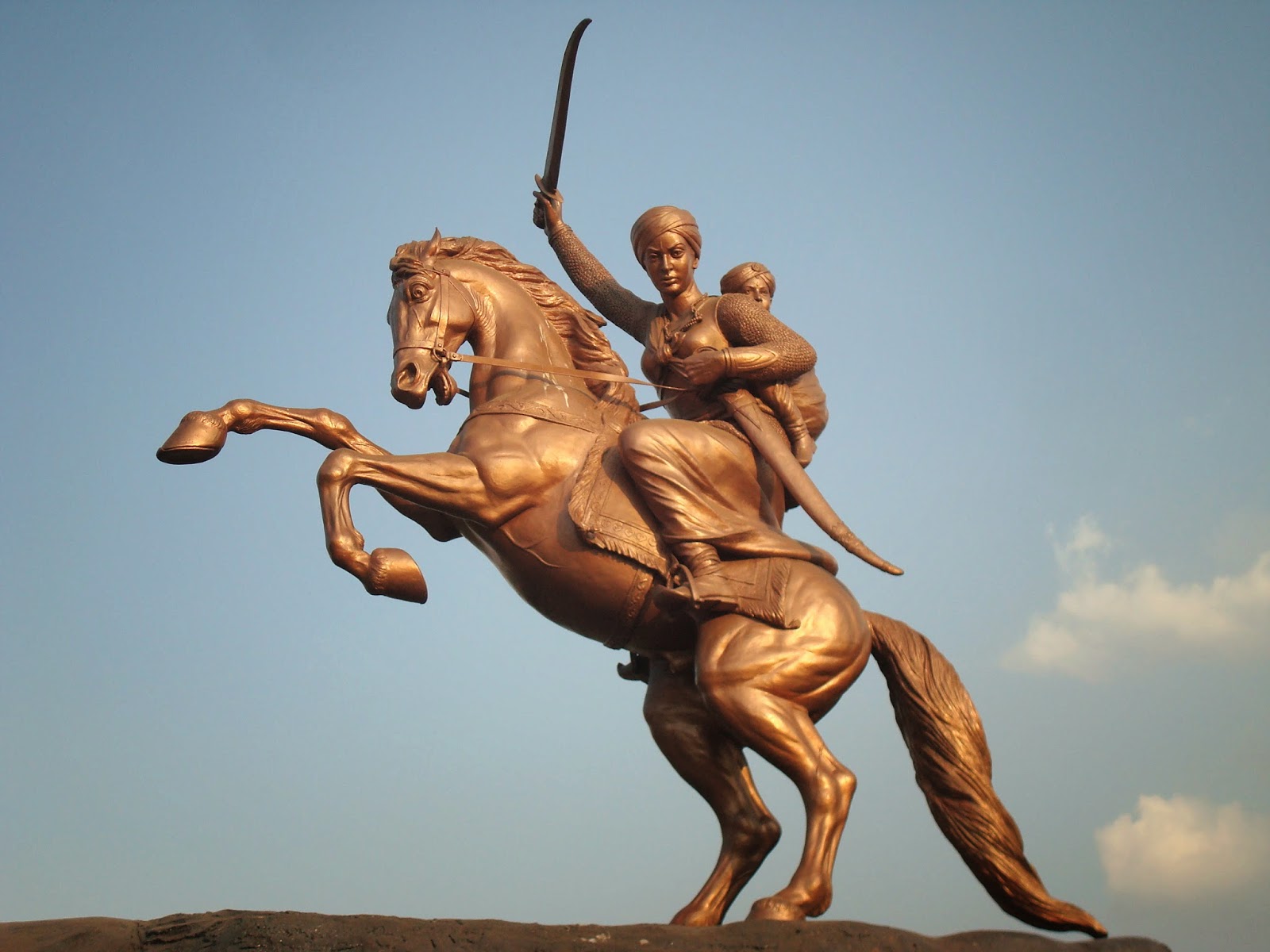Thursday 14 August 2014
Impact of the highly improbable – Part 12
Rani
reached Kalpi and fought against the British forces with Tatia Tope and Rao
Sahib.
The
combined forces of Rani were, however, routed by General Rose at the battles of
Poonch and Kalpi. Lakshmi Bai then reached
Mahasweti
Devi reports the brief remembrances of Damodar who was only a child at the
time. One in particular tells of how one 'evening in Gwalior came back to his
mind over and over again when a loving glance from a pair of enormous eyes
seemed to reach out towards him and then move far off - it was as if his mother
was going far away, where one could no longer touch her.'
Understandably
the Rani's funeral was carried out very quickly after her death since none
could guarantee that she would be dealt with proper respect if they delayed.
Lakshmibai
had two 'maids of honour' who accompanied her from
One
has to be impressed by their loyalty and courage. Their indomitable spirit
inspires us. But then there were many such people even more anonymous, their
acts unknown to history. We can only acknowledge the deeds of a few, and they
must also stand for all these others.
Two
days later the rebels left
Rani
was thus cheated twice by the British. First was the way in which they annexed
As
a result of the actions of the British, and others, she plunged into the
Warfield, transforming herself as the leader of an army and the most important personality
of the Indian Rebellion. With her death the rebellion was over. It did erupt
again but that’s a subject of another post in this series.
Today
her name is commonplace throughout
But according to me she was more than a
martial leader. In her brief time she cast aside many conventions to unite
people of all castes and religions in her cause. She put aside purdah, which
she only observed with respect to the British in any case, encouraged other
women to do the same and trained them to fight and support the army;
Lakshmibai was not the only
I
would talk in next post what happened to others, why Indians lost the first war
of Indian independence and what happened to the East India Company after the
rebellion.
But
this post is not for that.
I
would like to have this post as a tribute to the remarkable women. It does not
matter whether you are fighting with sword or with words. If you are fighting
for your right while doing your duty then you are indeed a Lakshmi Bai.
In
1942, an all-women regiment of the Indian National Army formed to fight British
colonial rule, was named in honour of the Rani of Jhansi. (http://en.wikipedia.org/wiki/Rani_of_Jhansi_Regiment)
Indeed
Rani is a symbol of Women empowerment.
Mahasweta
Devi in her book Queen of Jhansi writes as follows (a small extract)
“Everywhere
in
Then
where is Rani Lakshmibai?
Even
today Rani Lakshmi bai is invoked and worshipped daily in Bundelkhand as
goddess Durga, as Shakthi.
Is
all the reverence people feel towards her just and overflow of emotion? Was
there no basis for it? If we want to know that, we will have to go back in time
and see the Bundelkhand 100 years ago. English trampled upon the heart of
Rani
Lakshmibai was an expression of what
Devi
says “One truth rises above countless mistakes, flaws weaknesses and defeats of
those days and that is of the first conscious rebellion taking place against
the stranglehold of the foreign rule. As long as we are aware of that, the name
of Rani Lakshmibai will be etched in our memory. No one will forget the Queen,
even if there is no worthy memorial raised to her. As long as people insist
“Rani margay na houni’ – The queen did not die, the Queen will be alive. It’s
true that her body was consigned to flames on 17th June 1858, but
she is immortal. The Queen of Jhansi lives for ever in the heart of her people.
In a sense she achieved what she desired; her name and that of
If
you want to find her, you will have to go to those places and get to know the
people who still believe with all their hearts that their Bai Saheba never
died. Then, out of the belief of these uneducated, poor, farming men and women,
slowly the image of a unique woman will appear – an amazing woman from
To
be continued…
Subscribe to:
Posts (Atom)

